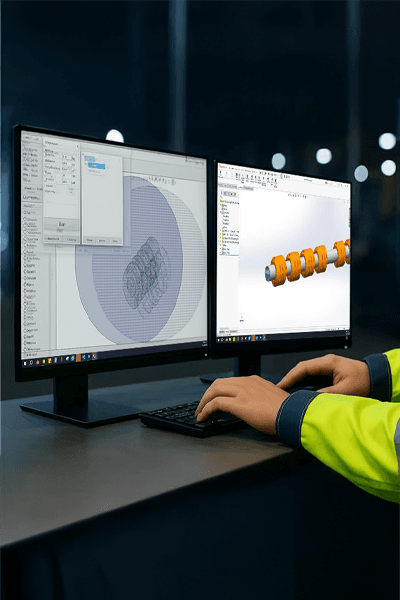
Xylem
7 May 2024
Sydney Water’s Picton Water Resource Recovery Facility
Heavy Duty Pontoons, Hose and Cable Floats
Introduction
Coerco delivered specialised engineered products to overcome the unique environmental and logistical challenges of the Kidston Hydro Project in Far North Queensland.
The Challenge
The pontoon system needed to adapt to the lake’s irregular topography, fluctuating water levels, and varied water density. Coerco designed a fit-for-purpose floating solution that maintained pump submergence and performance in these changing conditions. Every detail was engineered to suit the environmental realities of the site.
Integrating a high-capacity pump onto a stable floating structure required careful consideration of weight distribution, assembly, and service access. Coerco developed a modular, balanced platform that supported both the pump and auxiliary systems without compromising stability. This ensured smooth operation and efficient deployment.
The platform had to meet strict compliance with AS 4100:2020, AS 4997-2005, and AS 1657:2018. Coerco delivered a fully certified solution that aligned with safety, access, and structural integrity standards. This provided peace of mind for the client and met Sydney Water’s high-performance expectations.
The Solution

By delivering the pontoon in a modular, pre-assembled format, Coerco enabled faster, more efficient installation on-site. This reduced construction complexity and minimised downtime at the facility.
The streamlined design and collaboration with Xylem allowed Sydney Water to save both time and money on the project. Fewer site works and a simplified delivery model contributed to overall project efficiency.
The combination of thoughtful engineering, quality materials, and adherence to Australian Standards ensured the solution met strict compliance requirements. This enhanced operational safety and longevity of the system.
Marc Alberto, Coerco Design Engineer, Xylem
WHY CHOOSE US


As a family-owned business, we're passionate about improving lives, supporting charitable causes, and actively participating in community events while creating local jobs.


We provide exceptional customer care with prompt, efficient, tailored solutions, actively listening to your feedback and offering genuine support from first contact through post-delivery.


Our 30+ years of in-house engineering expertise and 150+ skilled team deliver innovative solutions using the widest product range and strategic industry partnerships.
Years In Business
Team Members
Square Metres of Manufacturing
